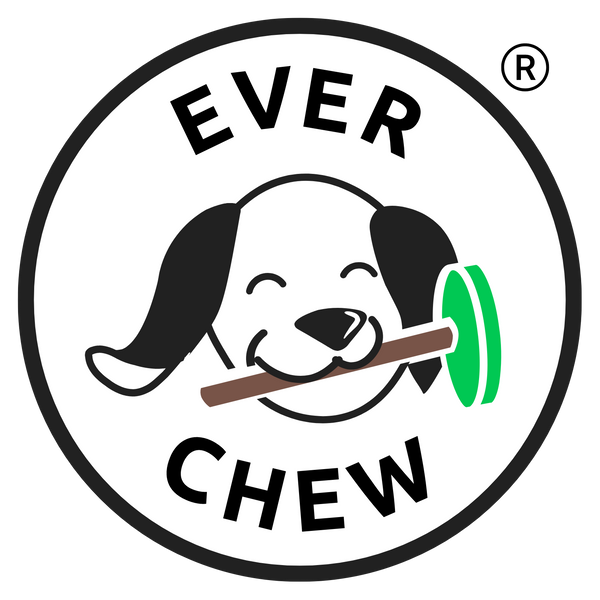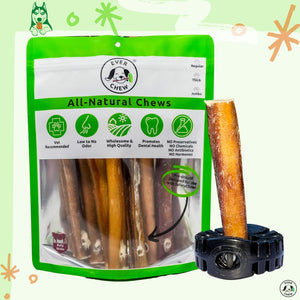Dachshunds: A Guide to Chewing Bully Sticks

by Kirby (Inventor of EverChew)
Dachshunds are unique dogs with distinctive long bodies and short legs, originally bred for hunting badgers in underground tunnels. Their specialized body shape extends to their head structure--with long, narrow muzzles that create specific bite mechanics. This requires careful consideration for chew safety, particularly given their predisposition to spinal issues that can be aggravated by inappropriate chewing positions.
Dolichocephalic Design with Hunting Heritage
Dachshunds belong to the dolichocephalic family, meaning they have long, narrow skulls that provide advantages for their original hunting purpose. Their elongated muzzles offer leverage for their jaw muscles while maintaining precise dental alignment for gripping and holding prey. This skull design provides several benefits: scenting capabilities needed for tracking, efficient breathing during extended hunts, and a scissor-bite pattern where the teeth align precisely.
Despite their small to medium size, Wiener Dogs generate respectable bite forces ranging from 100-200 PSI. This reflects their terrier-like determination and hunting heritage—they needed great jaw strength to tackle badgers.
In Short—Which EverChew Holder?
Dachshunds may need any of the three holders depending on life stage and chew-craziness. Try the smaller green EverChew holder for puppies and smaller Dachshunds. The Plus holder will likely work for larger adults. The black nylon Superchew holder may be needed for the superchewer Dachshunds that render every toy they have into mulch.
Understanding Bully Stick Benefits and Why Holders Are Essential
Dachshunds are natural, determined chewers with strong prey drive that extends to chewing. Their chewing serves multiple important purposes: dental health maintenance, mental stimulation, stress relief, and satisfying their hunting instincts. Their elongated bodies and short legs mean they particularly benefit from chewing activities that can be enjoyed in comfortable, horizontal positions.
Bully sticks are pure protein treats (similar to beef jerky) that provide an ideal chewing texture for Dachshund dental mechanics. Their firm but gradually softening consistency allows these precise chewers to work systematically with their needle-sharp teeth, effectively scraping away plaque and tartar while providing satisfying resistance that engages their hunting instincts. The manageable holding of bully sticks in the holder also allows Dachshunds to manipulate them comfortably without straining their elongated spines.
However, Dachshunds' determination and precision can create serious risks with bully stick stubs. Their hunting heritage makes them incredibly persistent about not releasing items they consider "prey," and their narrow throats can make the chew stub potentially dangerous.
Life Stage Considerations
Puppy Phase (8 weeks - 8 months): Dachshund puppies experience intense chewing during teething, typically peaking between 3-6 months. Their hunting instincts begin developing early, making them determined and focused chewers even as babies. Early introduction to chews helps satisfy these instincts.
Adult Phase (8+ months): Adult Dachshunds continue active chewing throughout their lives, often using it to satisfy prey drive and manage energy. Their determination makes them persistent chewers who will work on chews for extended periods.
Senior Phase: Older Dachshunds particularly benefit from the low-impact dental exercise that bully sticks provide, especially as age-related spinal issues may limit their ability to engage in more physically demanding activities.
Selection Guidelines
Choose the Small Dog holder for your Dachshund if:
- They chew gently
- They are under 16 pounds with normal chew activity
Choose the Plus holder if your Dachshund:
- Is over 16 pounds
- Chews very aggressively
Get the Superchew holder if your Dachshund:
- Tears everything up despite their size.
- Has the nickname “Gator”



